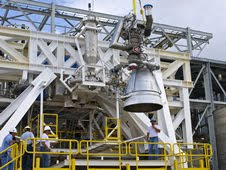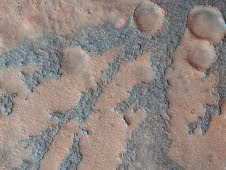NASA Chat: Crumbling Comets Create Marvelous Meteors

Summer means fireworks, and here's how to see some of Nature's best displays. Start with a few comets streaking around the solar system, leaving behind dusty trails of gas, ice, rocks and dust. Then find a comfortable nighttime seat on planet Earth as it passes through these dusty comet trails. Finally, sit back and enjoy the show as bits of leftover comet burn up in our atmosphere, creating the celestial displays that we call meteor showers.
On Thursday, July 22, astronomer Bill Cooke from NASA's Marshall Space Flight Center will answer your questions about comets and meteors: their origins and cycles, their composition and colors and the best way to catch a glimpse of them in the night skies.

Bill has perfect timing: around July 28 and 29, the Southern Delta Aquarids meteor shower will peak as remnants of the Marsden and Kracht Sunskirting comets glow in the summer sky.
Joining the chat is easy. Simply visit this page on Thursday, July 22 from 3-4 p.m. EDT. The chat window will open at the bottom of this page starting at 2:30 p.m. EDT. You can log in and be ready to ask questions at 3:00.
More About Chat Expert Bill Cooke
The head of NASA's Meteoroid Environment Office, Dr. Bill Cooke specializes in the meteoroid environment and its effects on space vehicles of all sorts. While a graduate student at the University of Florida, he worked on instruments flying onboard balloons, the Space Shuttle, Giotto (European mission to Halley's Comet), and the Long Duration Exposure Facility.
After obtaining his PhD, he came to work at Marshall Space Flight Center as a member of the Space Environments Team. When not occupied with meteor observations and shower forecasts, he dabbles as a free- lance author for magazines and is a mentor for the Team America Rocketry Challenge and NASA's Student Launch Initiative rocketry programs.

Summer means fireworks, and here's how to see some of Nature's best displays. Start with a few comets streaking around the solar system, leaving behind dusty trails of gas, ice, rocks and dust. Then find a comfortable nighttime seat on planet Earth as it passes through these dusty comet trails. Finally, sit back and enjoy the show as bits of leftover comet burn up in our atmosphere, creating the celestial displays that we call meteor showers.
On Thursday, July 22, astronomer Bill Cooke from NASA's Marshall Space Flight Center will answer your questions about comets and meteors: their origins and cycles, their composition and colors and the best way to catch a glimpse of them in the night skies.

Bill has perfect timing: around July 28 and 29, the Southern Delta Aquarids meteor shower will peak as remnants of the Marsden and Kracht Sunskirting comets glow in the summer sky.
Joining the chat is easy. Simply visit this page on Thursday, July 22 from 3-4 p.m. EDT. The chat window will open at the bottom of this page starting at 2:30 p.m. EDT. You can log in and be ready to ask questions at 3:00.
More About Chat Expert Bill Cooke

The head of NASA's Meteoroid Environment Office, Dr. Bill Cooke specializes in the meteoroid environment and its effects on space vehicles of all sorts. While a graduate student at the University of Florida, he worked on instruments flying onboard balloons, the Space Shuttle, Giotto (European mission to Halley's Comet), and the Long Duration Exposure Facility.
After obtaining his PhD, he came to work at Marshall Space Flight Center as a member of the Space Environments Team. When not occupied with meteor observations and shower forecasts, he dabbles as a free- lance author for magazines and is a mentor for the Team America Rocketry Challenge and NASA's Student Launch Initiative rocketry programs.















































